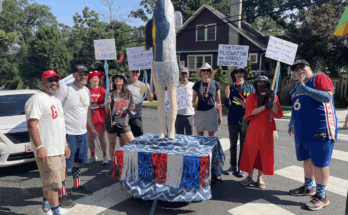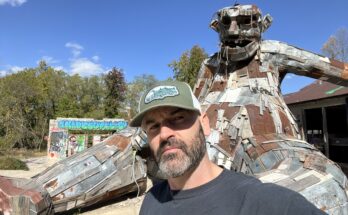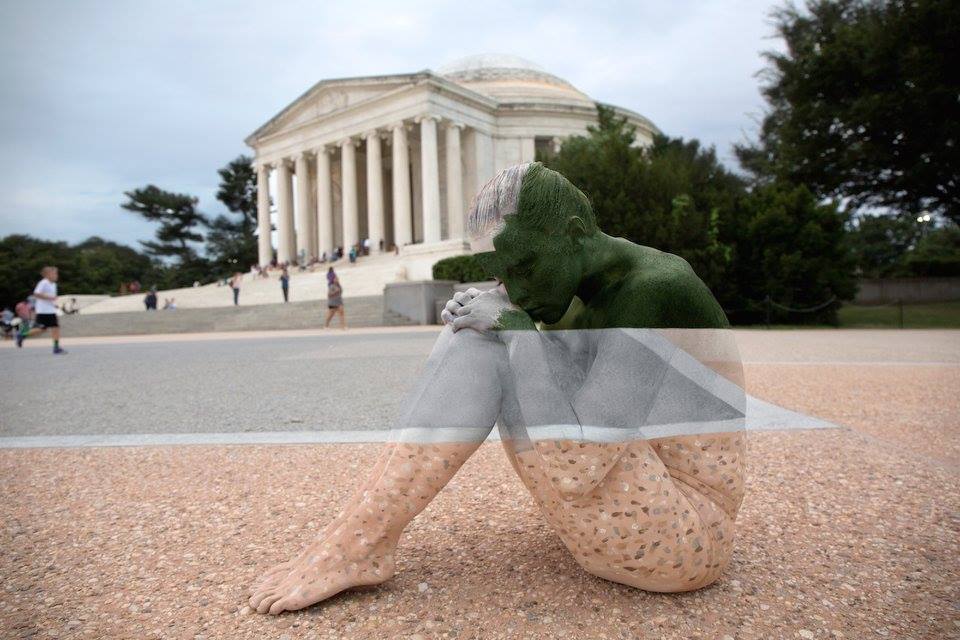
Trina Merry created a series of striking images of models camouflaged in with local D.C. landmarks. Here, she talks more about her visit to D.C. and her unique work.
On your website, you say musician Amanda Palmer introduced you to bodypaint. How did this meeting happen and how did it change you?
I worked in Artist Relations for the Drums and Guitar department of Yamaha and encouraged the staff to sign Amanda’s band The Dredsen Dolls. I’d heard drummer Brian Viglione play and thought he was incredible. Yamaha provided Amanda with some keyboards which is how we wound up meeting. During our encounter, she urged me to step outside of my comfort zone, and I have continued to do so since. Our meeting greatly influenced the trajectory of my life.
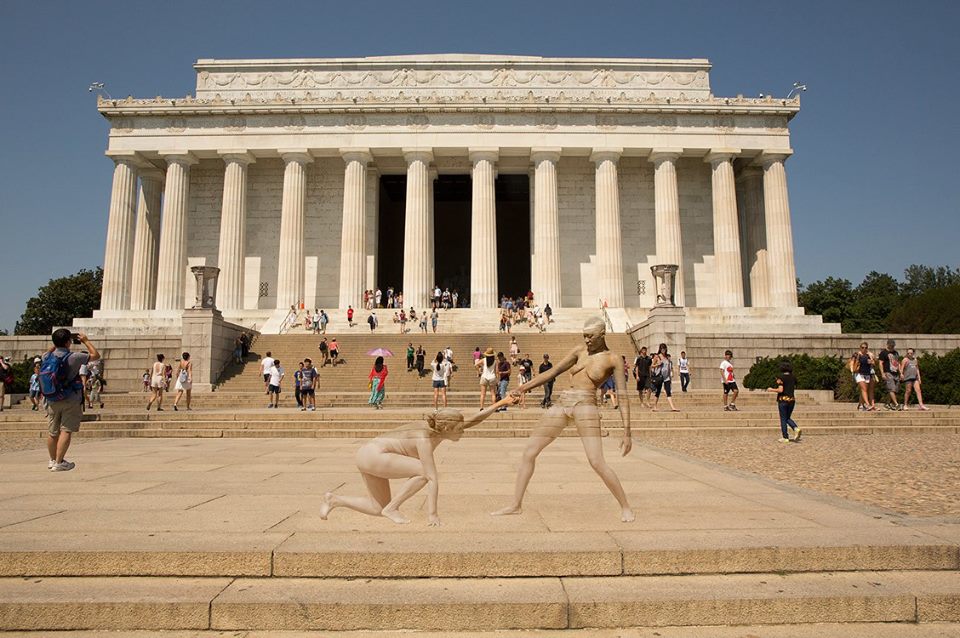
You mention the gulf between the body paint community and the fine art world. In what ways have you been successful in bridging this gap?
At a certain point in my career, I was interested in bridging the gap between bodypaint and the fine art world for the bodypaint community at large. I am presently more inspired to find a deeper connection with the contemporary fine art world than I am in building the proverbial bridge. Additionally, I am interested in fostering relationships with other bodypainters in the contemporary fine art world.
I feel that a lot of bodypainters have recently become interested in what I see as mild, short-term successes—reality television shows, bodypaint competitions, finding small gigs and glimmers of fame from social media. However, this route and attitude conflicts with contemporary art at its core.
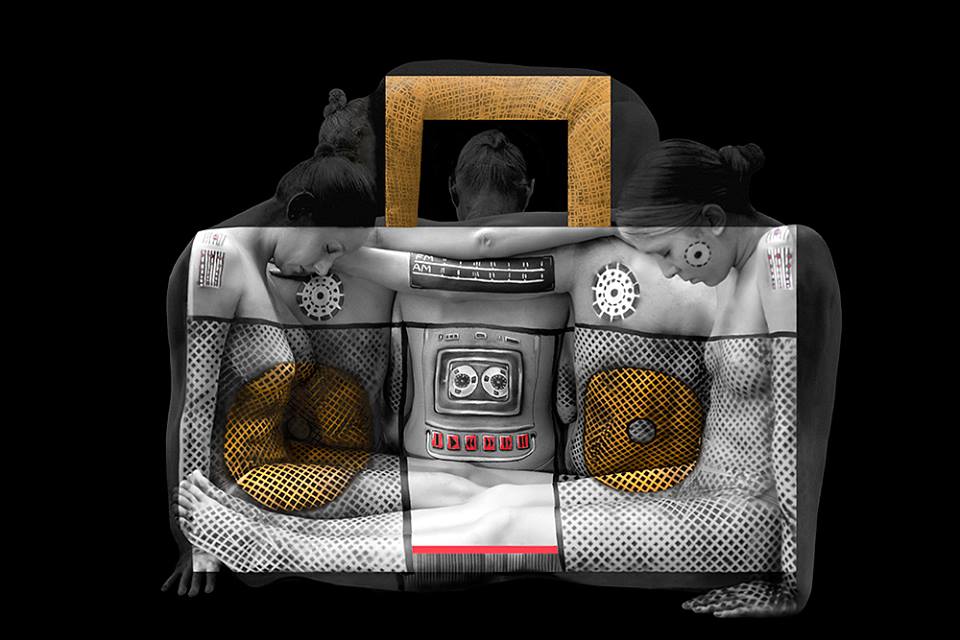
The intent of contemporary art is not to find quick fame but to push the limits of art and how we presently view it. I moved to New York, and at one point, I had a studio in Chelsea. I did an artist’s residency with Robert Wilson at the Watermill Center. Additionally, I created performance art work for museums and galleries on the West Coast and had limited edition prints of my work sold at auctions.
Otherwise, I am a part of the International Fine Art Bodypaint Association and have won first place in the Fine Art Installation Category at the World Bodypaint Festival. I see myself slowly building momentum and growing towards meaningful work instead of seeking the limited flame of instant success. Overall, I hope all bodypainters are working on pieces in a way that make us all happy and passionate.
Has your work changed the way you look at bodies?
My work has significantly changed the way I look at bodies! I used to be more ashamed of my own body and thought the nude figure was something to be ashamed of because it’s frequent association with sexuality. I do not view the body in this light at all anymore. Now, when I look at a body, I see highlights, shadows, lines, curves, colors, tones, textures and the numerous possibilities that a specific body contains. I love pushing the human body to it’s fullest potential. Having a view of the body that is not based in sexuality allows me to do that to the best of my ability.
What made you come to Washington, D.C. last August?
I decided to come to Washington, D.C. as an homage to a younger, less fortunate me. When I was in 8th grade, my family did not have enough money for me to go on the class trip to Washington, D.C. I decided that if I were ever go, it would be a momentous occasion, so I went and painted! I look at that trip as a way to celebrate everything that I have now.
How did you choose your D.C. locations?
I selected iconic locations that are related to the three branches of government or the founding fathers.
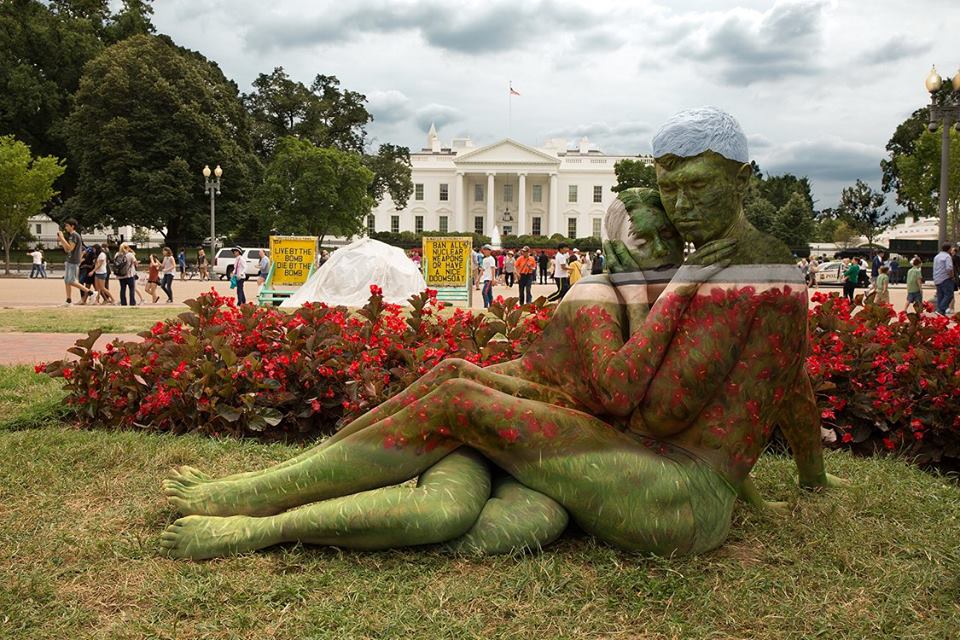
The models and I were treated like activists. That has never happened to me before, nor do I look at myself as an activist artist. The public offered me tremendous support and were even interested in helping me arrange exhibitions in D.C. The police and park security were also amazing and accommodating. Often, my interactions with police involve confrontations as they are not aware of their jurisdiction’s own art and nudity laws. However, as D.C. is a top-free state (women can legally bare their breasts in public) the police were actually defending us and helped to keep us safe. It was truly a wonderful experience to create art publicly with a large level of freedom.
What are you most proud of as an artist?
This is a difficult question for me because I am never satisfied and always feel like there is more that I can accomplish. I will say that I am proud of my courageousness and passion. Without those two crucial elements, I wouldn’t have the driving force to do this every day.
What do you still hope to accomplish?
I would love to paint alongside indigenous bodypainters, exhibit more in New York, and to experiment with video and installation art. Hopefully I can accomplish that in 2016.

More of Trina Merry’s work can be found at her website: Trinamerry.com


